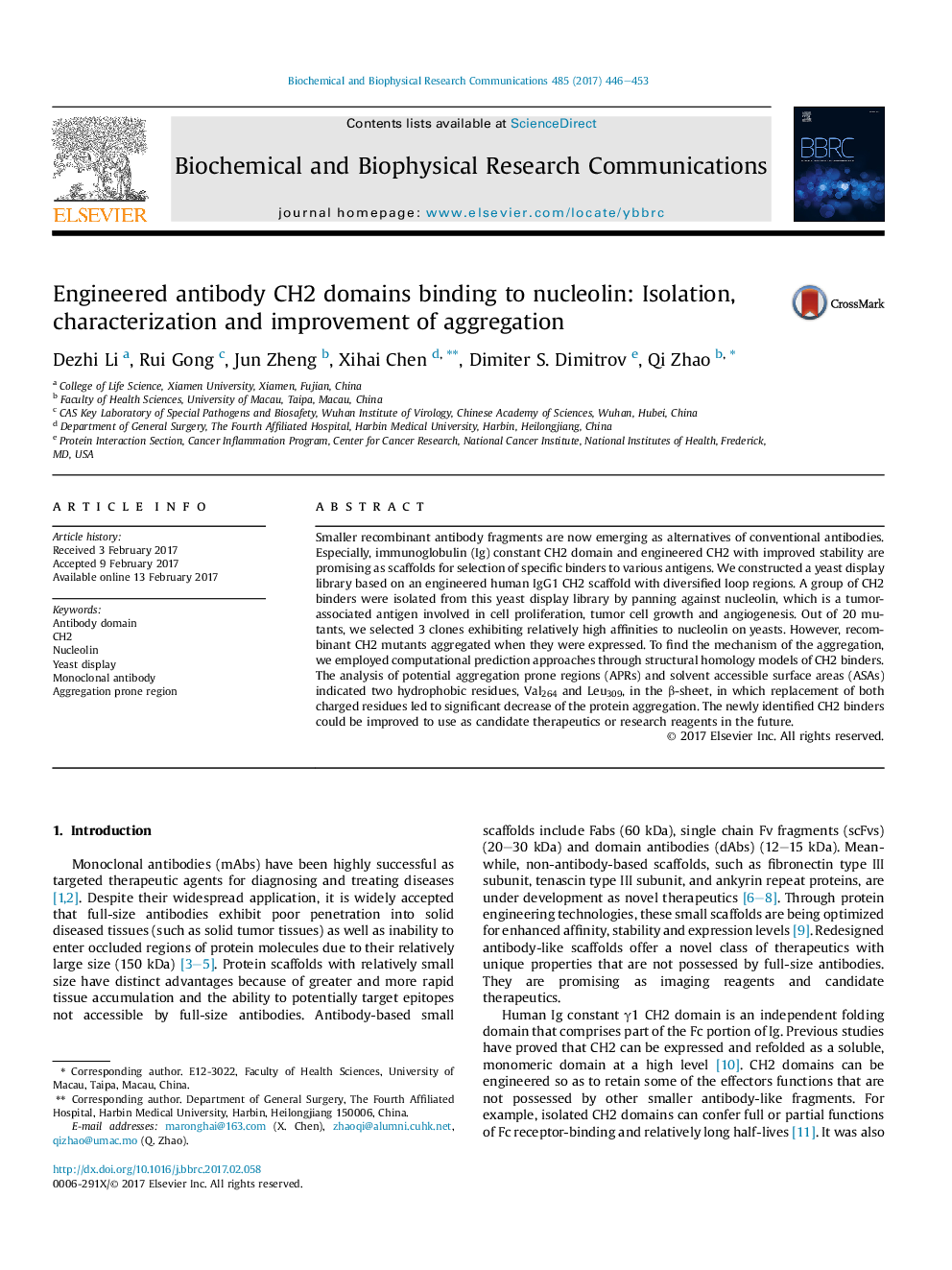| Article ID | Journal | Published Year | Pages | File Type |
|---|---|---|---|---|
| 5506189 | Biochemical and Biophysical Research Communications | 2017 | 8 Pages |
â¢Novel engineered CH2 domains to nucleolin were identified from the yeast display CH2-based library.â¢Aggregation prone regions (APRs) were predicted through structural homology models CH2 domains.â¢The replacement of two hydrophobic residues in APRs significantly led to decrease of the CH2 aggregation.
Smaller recombinant antibody fragments are now emerging as alternatives of conventional antibodies. Especially, immunoglobulin (Ig) constant CH2 domain and engineered CH2 with improved stability are promising as scaffolds for selection of specific binders to various antigens. We constructed a yeast display library based on an engineered human IgG1 CH2 scaffold with diversified loop regions. A group of CH2 binders were isolated from this yeast display library by panning against nucleolin, which is a tumor-associated antigen involved in cell proliferation, tumor cell growth and angiogenesis. Out of 20 mutants, we selected 3 clones exhibiting relatively high affinities to nucleolin on yeasts. However, recombinant CH2 mutants aggregated when they were expressed. To find the mechanism of the aggregation, we employed computational prediction approaches through structural homology models of CH2 binders. The analysis of potential aggregation prone regions (APRs) and solvent accessible surface areas (ASAs) indicated two hydrophobic residues, Val264 and Leu309, in the β-sheet, in which replacement of both charged residues led to significant decrease of the protein aggregation. The newly identified CH2 binders could be improved to use as candidate therapeutics or research reagents in the future.
